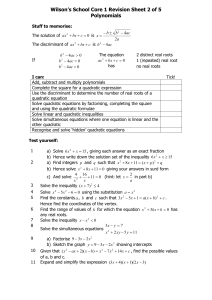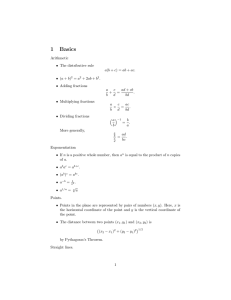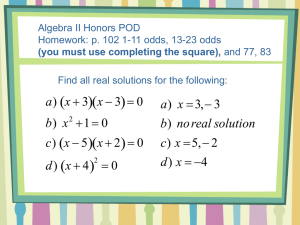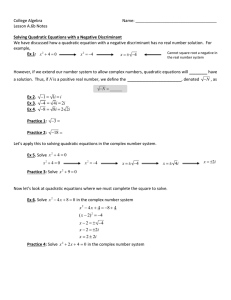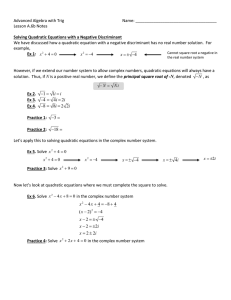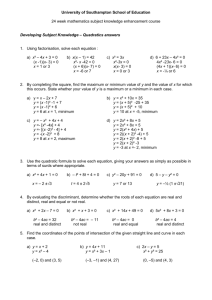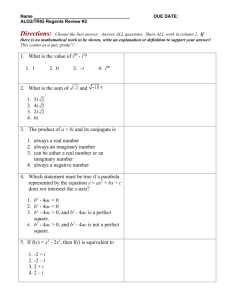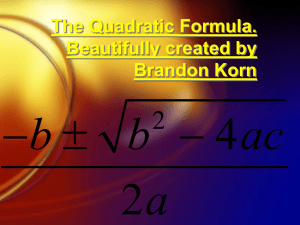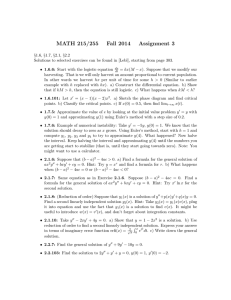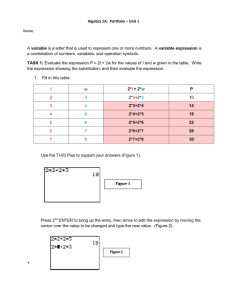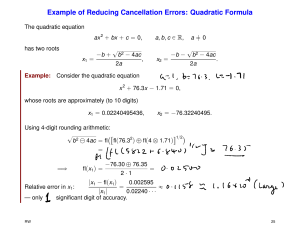Assignment 2 Postmortem - STEP Correspondence Course
advertisement
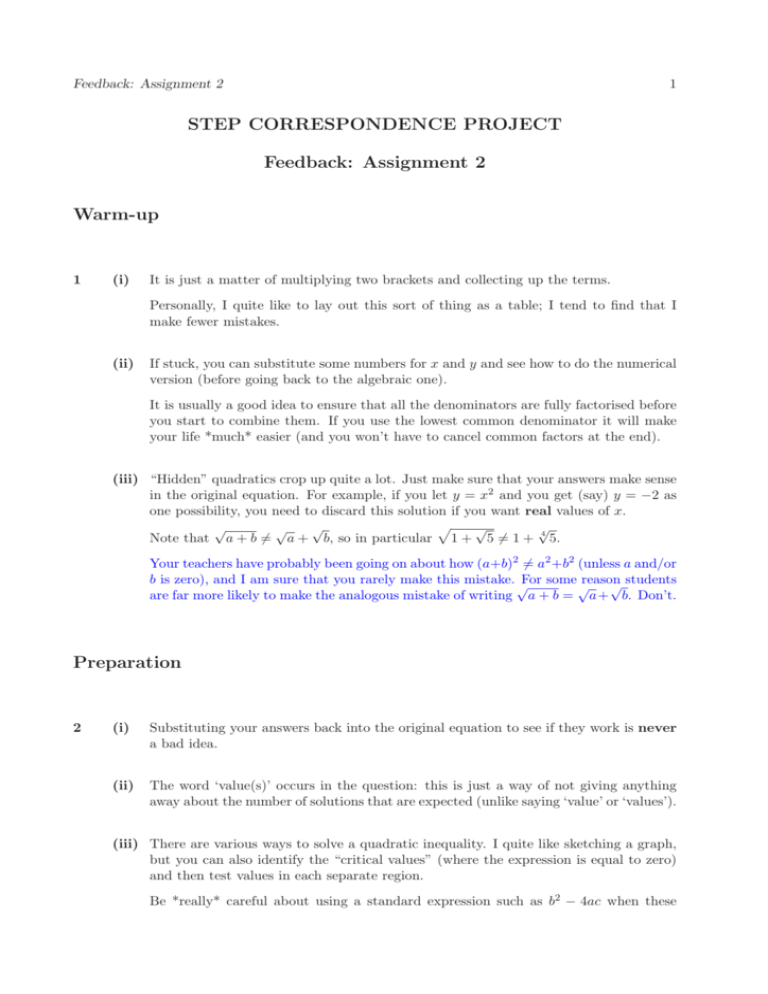
1 Feedback: Assignment 2 STEP CORRESPONDENCE PROJECT Feedback: Assignment 2 Warm-up 1 (i) It is just a matter of multiplying two brackets and collecting up the terms. Personally, I quite like to lay out this sort of thing as a table; I tend to find that I make fewer mistakes. (ii) If stuck, you can substitute some numbers for x and y and see how to do the numerical version (before going back to the algebraic one). It is usually a good idea to ensure that all the denominators are fully factorised before you start to combine them. If you use the lowest common denominator it will make your life *much* easier (and you won’t have to cancel common factors at the end). (iii) “Hidden” quadratics crop up quite a lot. Just make sure that your answers make sense in the original equation. For example, if you let y = x2 and you get (say) y = −2 as one possibility, you need to discard this solution if you want real values of x. p √ √ √ √ √ Note that a + b 6= a + b, so in particular 1 + 5 6= 1 + 4 5. Your teachers have probably been going on about how (a+b)2 6= a2 +b2 (unless a and/or b is zero), and I am sure that you rarely make this mistake. √For some reason students √ √ are far more likely to make the analogous mistake of writing a + b = a+ b. Don’t. Preparation 2 (i) Substituting your answers back into the original equation to see if they work is never a bad idea. (ii) The word ‘value(s)’ occurs in the question: this is just a way of not giving anything away about the number of solutions that are expected (unlike saying ‘value’ or ‘values’). (iii) There are various ways to solve a quadratic inequality. I quite like sketching a graph, but you can also identify the “critical values” (where the expression is equal to zero) and then test values in each separate region. Be *really* careful about using a standard expression such as b2 − 4ac when these Feedback: Assignment 2 2 letters already occur in the question. You can write it in inverted commas to remind yourself what you are doing: ‘Using ‘b2 − 4ac’ gives ... ’. But it is probably better to write something like B 2 − 4AC (provided these letters do not also occur in the question!) and then you can write B = 5c etc without confusing yourself. When you have an inequality, you must be very careful not to divide (or multiply) it by something which may, or may not, be negative. For example, if you have x2 < 4x you should not divide by x to get x < 4 as this inequality is not equivalent to the previous one (if x = −10, the second equality holds but the first one does not). It is far better to rearrange to get x2 − 4x < 0 and then sketch (or factorise the right hand side of) y = x2 − 4x. The STEP question 3 Do remember that whenever you are asked to prove a given result then you must do so clearly with a full explanation. √ √ (i) Here some people solved the equation to find the two roots (x = ab or x = − ab) and others obtained a quadratic equation and showed that the discriminant is positive. Either way is fine, but in both cases you must clearly explain why there are two real solutions if a and b are either both positive or both negative. It might seem obvious to you, but you need to write it down! (ii) You were asked to show something of the form: the condition c2 = A is equivalent to the condition c2 = B. All you have to do is show, one way or another, that A = B. You can go forwards or backwards. You can start with c2 = B and then work backwards to get c2 = A (for added Brownie points put a ⇐⇒ between each bit of working to show that the argument can be followed both ways — provided you are sure that it really is ⇐⇒ ). Perfectionists can do the working from c2 = B in rough and then reverse the argument starting from c2 = A on neat paper. Please do not start with A = B (because that is what you are trying to show); though you could start with A − B = · · · , hoping to show A − B = 0. For the very last part, you do need to show that c2 6= 0; i.e. you need to show that c2 is strictly greater than zero (not just c2 > 0). This is easiest if you use the first expression you have for c2 and remember the information that you were given at the beginning of the question. Warm down 4 As a starting point, write 2450 as a product of prime factors, and then carefully and logically write down all possible sets of three ages for the bellringers. Feedback: Assignment 2 3 Don’t forget that the Bishop knows how old he/she is (and knows how old the Minister is). The fact that the Bishop cannot immediately work out the ages of the bellringers but can do so after being given a little more (apparently unhelpful) information is important.
